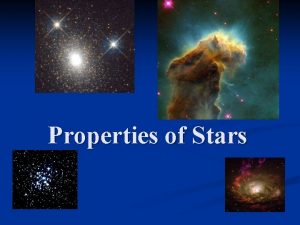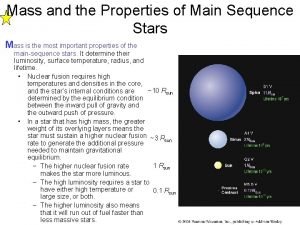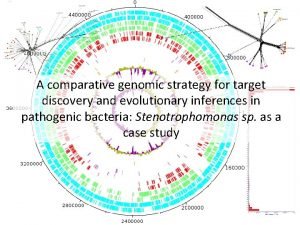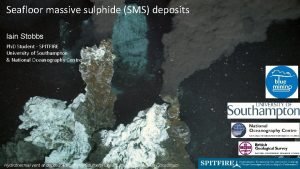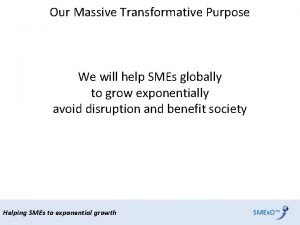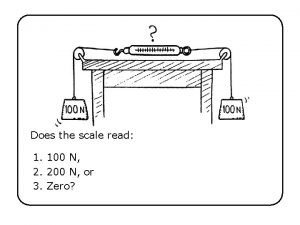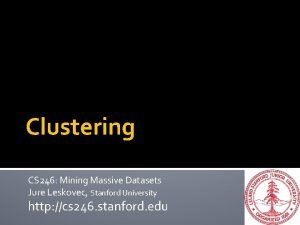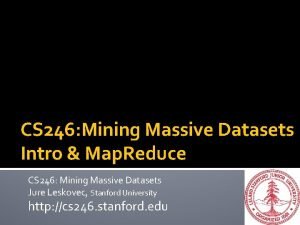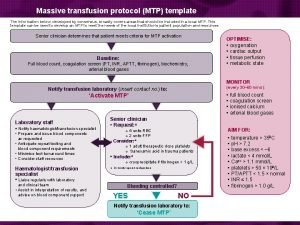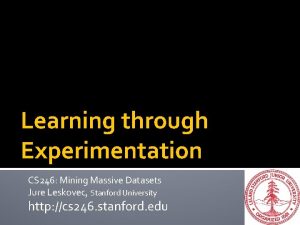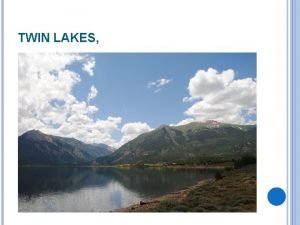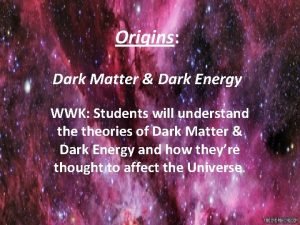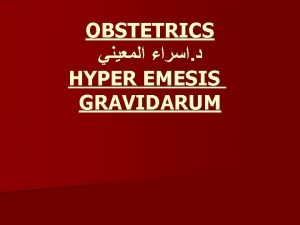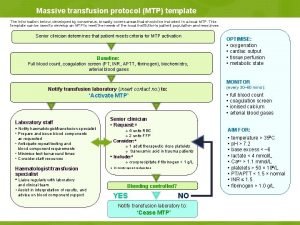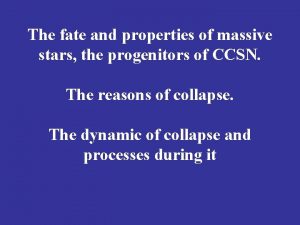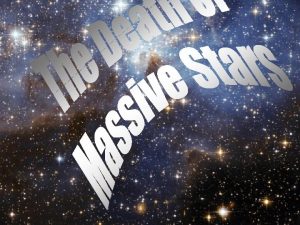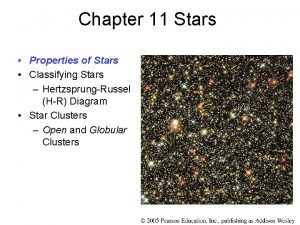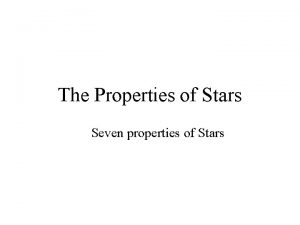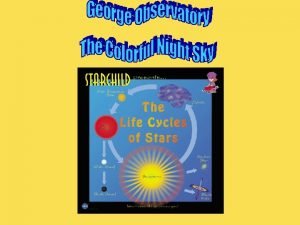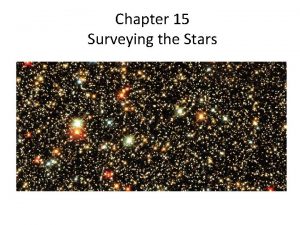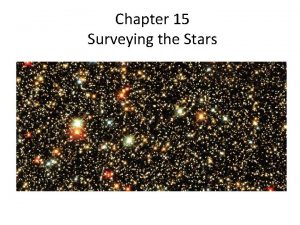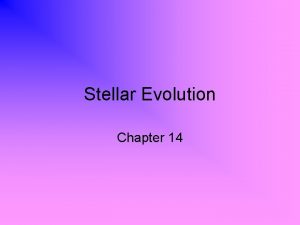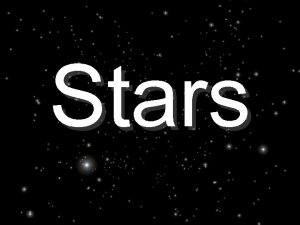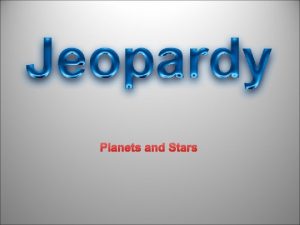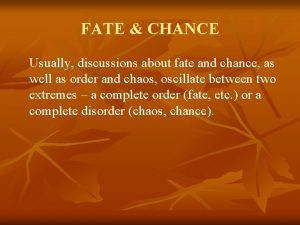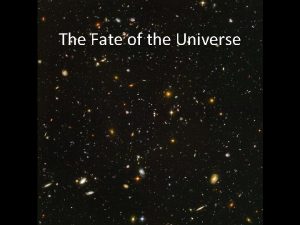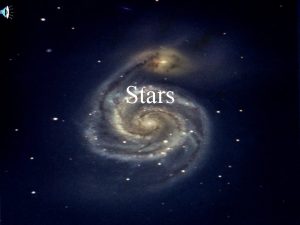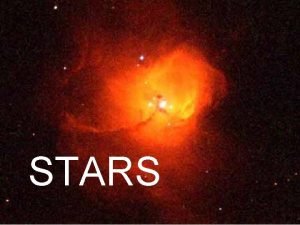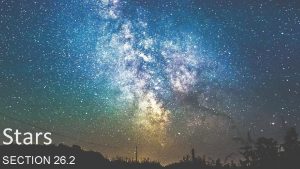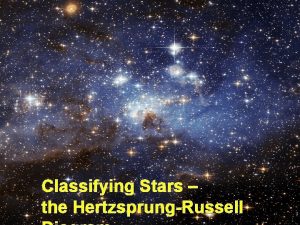The fate and properties of massive stars the































- Slides: 31

The fate and properties of massive stars, the progenitors of CCSN. The reasons of collapse. The dynamic of collapse and processes during it

Hertzsprung-Russell diagram Image: Wiki, credits ESO https: //www. eso. org/public/images/eso 0728 c/

Stars

M<8 MSUN Quiet envelope ejection, white dwarf formation (WD) i=isolated b=binary WD i, b WD SN Ia b M=(8— 25 ) MSUN Supernova (SN) explosion, neutron star (NS) formation Normal star Giant star NS NS i, b b BH BH M>25 MSUN Collapse to black hole (BH)? WD, NS, BH = star’s cemetery Adapted from D. G. Yakovlev, “Nuclear burning in superdense matter”, Pushino (2010)

From: Georg G. Raffelt Proceedings ISAPP School Neutrino Physics and Astrophysics

Supernova 1994 D in Galaxy NGC 4526


Three characteristic stellar timescales Hydrodynamic timescale Thermal timescale Nuclear timescale


Main factors, determining the structure and the evolution of massive stars § Rotation § Turbulent convection § Large-scale (meridional) circulation § Mass loss by stellar wind § Energy losses due to neutrino emission (especially on late stages of evolution)

From: H. -Th. Janka “Explosion Mechanisms of CCSN”

Weaver, Zimmerman, Woosley Ap. J v. 225, p. 1021 (1978)

Onion stellar structure just before collapse

Neutrino processes in a presupernova Electron-positron pair annihilation

Plasma neutrino process

Photoneutrino process in the Coulomb fields of atomic nuclei and electrons The URCA process Gamow & Schönberg (Phys. Rev. 1940, 1941)


M. Kutschera, A. Odrzywolek, M. Misiaszek “Presupernova as powerful neutrino sources”

During Si-burning phase 1 neutron/day/kiloton of water 1 kpc distance


Credit: Copyright 2010 Haubois/Perrin (LESIA, Observatoire de Paris) Red Supergiant Distance ~ 200 pc Mass ~ 12 Solar Radius ~ 800 Solar Luminosity ~ 100 000 Solar


From Woosley & Weaver An. Rev. Astron. Astrophys. v. 24, p. 205 (1986)


Expanding force: Dynamical stability Contracting force: Hydrostatics: Stability: 3γ − 2 > 2 γ > 4/3

Stellar equilibrium Virial theorem: Negative heat capacity Stability Critical value

White dwarfs Gravitation – baryons, pressure support – degenerate electrons 1. Non-relativistic electrons From virial theorem 2. Relativistic electrons S. Chandrasekhar

From: D. Nadyozhin, Lectures ITEP

The ravine of instability

Dynamics of gravitational collapse Initial “free fall”. Accreting shock wave A homogeneous sphere of a mass and radius : Schematic view

Foglizzo et al (2015) Janka et al (2012)
 Star with small and medium mass
Star with small and medium mass There are millions of stars in the sky
There are millions of stars in the sky How do scientists classify stars
How do scientists classify stars Properties of main sequence stars
Properties of main sequence stars Chapter 15 furniture styles and construction answer key
Chapter 15 furniture styles and construction answer key Massive comparative and superlative
Massive comparative and superlative Intensive vs extensive
Intensive vs extensive Chemical property definition
Chemical property definition There once was a man in china
There once was a man in china Laccolith shape
Laccolith shape Seabed massive sulphides (sms)
Seabed massive sulphides (sms) Massive transformative purpose examples
Massive transformative purpose examples Massive transfusion protocol
Massive transfusion protocol Arnold strongman and suzie small each pull
Arnold strongman and suzie small each pull Mining massive datasets
Mining massive datasets Massive transfusion complication
Massive transfusion complication Complications of blood transfusion
Complications of blood transfusion A scalable bootstrap for massive data
A scalable bootstrap for massive data Cs 246
Cs 246 Massive hemothorax
Massive hemothorax Massive hemothorax
Massive hemothorax Massive wood chipper
Massive wood chipper Hémiplégie massive proportionnelle
Hémiplégie massive proportionnelle A small sports car collides head on with a massive truck
A small sports car collides head on with a massive truck Mining of massive datasets solution
Mining of massive datasets solution Mtp template
Mtp template Stanford mining massive datasets
Stanford mining massive datasets Massive.io
Massive.io Middleton maneuver spleen
Middleton maneuver spleen Massive compact halo objects
Massive compact halo objects Define emesis
Define emesis Mtp template
Mtp template


